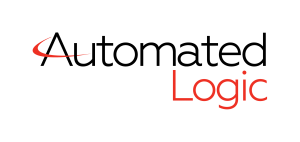Net zero, or carbon neutrality, means achieving a balance between the greenhouse gases put into the atmosphere and those taken out. From commercial businesses to educational institutions, reducing carbon emissions is a top sustainability goal for environmentally conscious organizations. And with so many workers and students returning to in-person environments in 2021, there’s a greater sense of urgency to reduce energy consumption (and costs) for facilities leaders and building owners.
Solar energy has been around for quite some time, and if you’re like many others in the market, you might think that implementing it is completely out of reach due to the high cost of solar panels, or you may be questioning whether solar will offer a beneficial return on investment for your organization. In this article, we’ll cover how solar energy works, the ways it can benefit your organization, and tell you about several programs that can make it accessible for your company, institution, or nonprofit organization.
How Do Solar Energy Systems Work?
Solar energy panels (also known as photovoltaic or PV modules) transform sunlight into a usable form of electrical current. This current is then sent to an inverter that converts the electricity from DC (direct current) to AC (alternating current), the type of electricity that we use to power homes and businesses. Then, the inverter feeds the electricity to the electrical panel, which distributes it among all the energy-using systems in the building. Excess energy that is not used is then directed back to the grid. Most utility companies offer credits to users based on how many kWh (kilowatt-hours) of energy they send to the grid.
Benefits of Solar Energy
How can solar energy benefit your organization? Here are a few key benefits to consider when making the choice of whether or not to go solar:
- Solar energy is renewable. Using solar energy doesn’t require any drilling, refining, or transportation of natural resources.
- It’s proven technology. The first solar energy experiments were conducted in the 19th century, and the first PV silicon cell capable of converting the sun’s energy into power was introduced in 1954. Homes and businesses have been successfully using solar panels since the 1980s. Today, the U.S. Energy Information Administration estimates that more than 88 billion kWh of electricity are produced by solar PV systems (plus an additional estimated 42 billion kWh from small-scale solar PV systems).
- Solar is more affordable than ever. Government and utility provider programs (in addition to financing options) are making solar systems more accessible than ever, even for budget-conscious organizations. We’ll discuss more about how to use these programs later in this article.
- Solar panels can be effective on many different buildings. Whether your rooftop is flat or pitched, solar panels can be installed to maximize the energy they draw from the sun’s rays. PV modules can be mounted using either fixed or tracking mechanisms, depending on which is ideal for your situation.
Solar Energy Programs & Incentives
There are several great options to help organizations like yours get started with solar:
- Federal Investment Tax Credit. The solar investment tax credit (ITC) is a tax credit that can be claimed on federal corporate income taxes for 30% of the cost of a solar photovoltaic (PV) system that is placed in service during the tax year. In December 2020, Congress passed an extension of the ITC, which provides a 26% for systems commencing construction in 2020-2022, 22% for systems commencing construction in 2023, and 10% for systems commencing construction in 2024 or thereafter. Any PV system placed in service after 2025, regardless of when it commenced construction, can receive a maximum tax credit of 10%.
- Renew STL Solar. Available to businesses in the St. Louis metropolitan area, Renew STL Solar’s mission is to offer non-residential building owners the chance to install solar on their property at no upfront cost and capture savings from day one. The program can help you achieve your organization’s sustainability goals and gain recognition for your organization while supporting the health of our people and our planet.
- Ameren Rebates. Ameren Missouri and Illinois offer several programs for businesses to capture rebates on solar energy they generate back to the grid. Currently they have funds available for solar rebates in 2021 at $0.25/watt. A full listing of commercial programs can be found on the Ameren sites for Missouri and Illinois.
Solar In Action at Automatic Controls
In fact, we were an early participant in the Renew STL program, having gone through their process before installing our current 85kW PV module array at the new Automatic Controls headquarters.
We view solar as a hedge against future electricity increases, allowing us to stay more in control of costs. In the first month of our solar PV system going live, we went from a $700 monthly bill to receiving a $75 dollar credit on our bill. Our energy engineers estimate net zero electricity costs of the course of the next year. To read more about Automatic Controls’ solar installation, check out this article from the St. Louis Business Journal.
Solar + Building Automation Systems = Peak Efficiency
When combined with a well-designed building and smart building automation systems (BAS), solar energy can add up to incredible efficiency gains that not only save you money, but help your organization do its part in saving the planet. Our team has expertise in integrating solar energy systems to help our customers achieve their facility goals. If you’re considering a solar energy system and want to know more about how to maximize its benefits, we can help. Contact Automatic Controls today to get started.









